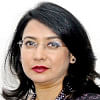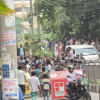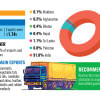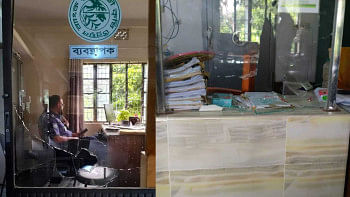ECONOMIC DEVELOPMENTS IN 2015
The year 2015 is ending with some positive notes for the Bangladesh economy, though challenges continue to accompany them. The New Year will, to a large extent, be shaped on the basis of how the economy has performed and what have been achieved in 2015. The political turmoil, amidst the protest of the opposition party, Bangladesh Nationalist Party, demanding free and fair elections marked the beginning of the current year. As the government celebrated its second year of assuming power on January 5, 2015, the opposition party that boycotted the national parliamentary elections of 2014 on the condition that elections be held under a neutral caretaker government, voiced its demand once again.
But political unrest, as always, had turned into violent actions for some time in January and February 2015, with both parties trying to stick to their respective positions. Due to general strikes called by the protesting party, the economic and social life of the country was disrupted for a while. The year 2015 consisted of the last two quarters of FY 2015 (January-June 2015) and the first two quarters of FY 2016 (July-December 2015). Therefore, the economy felt the heat of the political unrest to some extent during the third quarter of FY 2015. This had a toll on the economy in the short-term since production, transportation and various services were disrupted, which in turn impacted the supply chain of commodities across the country as well as the livelihoods of people.
The government targeted a 7.3 percent growth of gross domestic product (GDP) in its national budget for FY 2015. The actual GDP growth was, however, 6.5 percent in FY 2015, even though it was 0.4 percent higher than the previous year. This has been due to a relatively calmer political situation since the fourth quarter of FY2015 and the government's efforts to make up for the loss.
Political stability, however, has not removed political uncertainty. Though the government seems to be governing confidently while the opposition party seems to be getting weaker day by day due to a lack of space for its activities as well as a lack of leadership, investors are not fully free from worries about the future.
If investment figures are any indicator, their cautious moves in regards to investment decisions are obvious. The investment-GDP ratio hovers around 29 percent. In FY 2015, the total investment was 0.7 percent lower than what was targeted for, but 0.4 percent higher than the previous fiscal year. Private investment increased by only 0.1 percent in FY 2015 compared to the previous year. Public investment couldn't achieve its target either and fell short of the target by 0.6 percent. Low implementation of the Annual Development Programme (ADP) during July-November 2015 is a major factor for lower public investment. Political unrest has impacted the ADP implementation efforts. Decline in subsidy that comprises a major expenditure of the government has also contributed to this. Subsidies declined due to low commodity and petroleum prices in the international market. However, lower public expenditure is worrying, since infrastructure requires huge public investment for the private sector to come forward.
Remittances, one of the important sources of foreign exchange reserves of the country, showed a downward trend for some time of the year, but achieved 7.6 percent growth in FY2015. However, the remittance growth has been negative from July to November 2015, despite manpower export going up by 41.3 percent. Export numbers have not been encouraging, either. During FY 2015, exports grew by only 3.4 percent against the target of 10 percent. This has prompted policymakers to set export growth target at a lower level of 7.3 percent in FY2016. From July to November 2015, export growth was at 6.7 percent, mainly driven by higher exports of readymade garments (RMG) that picked up recently. Though still competitive in the global market, the RMG sector will have to learn to absorb higher costs due to stringent compliance requirements through increasing productivity.
The challenge of domestic resource mobilisation continues since last year. The target growth for FY 2015 was revised downward from 24.2 percent to 12 percent. And the actual growth was 1.2 percent higher than the revised target. But the budget for FY 2016 has once again overestimated revenue collection effort. The target for FY 2016, set at 29 percent will be challenging at its current pace. From July to September 2015, revenue grew by 9.6 percent, indicating that during the rest of FY 2016, the revenue collection has to be invigorated at a rate of 34 percent.
Inflation has been a silver lining in the economic landscape in recent times. Lower international commodity prices has contributed to this. Additionally, restrained monetary growth and a stable nominal exchange rate between Bangladeshi taka and US dollar has also pushed inflation downward. The mean average inflation reached 6.21 percent in November 2015, close to the target of the central bank to keep inflation at 6.2 percent by June 2016.
The year 2015 has also been significant for Bangladesh as country's position has been upgraded from a low income country to a lower middle income country status with a per capita income of USD 1,314. Despite challenges, achievements such as this are encouraging for Bangladesh.
In the short term, the global economic outlook for 2016 does not look promising. Major economies are struggling to recover from shocks while a few others are facing the threat of deflation. Therefore, the main boost for Bangladesh economy has to come from within the country. Fiscal prudence and revitalising investment will be critically important for achieving the growth targets. Institutional reforms, a daunting but essential task, have to be completed to realise the potential of the economy and fulfil the aspirations of accelerating and sustaining growth and prosperity.
The writer is Research Director at the Centre for Policy Dialogue.

 For all latest news, follow The Daily Star's Google News channel.
For all latest news, follow The Daily Star's Google News channel. 








Comments